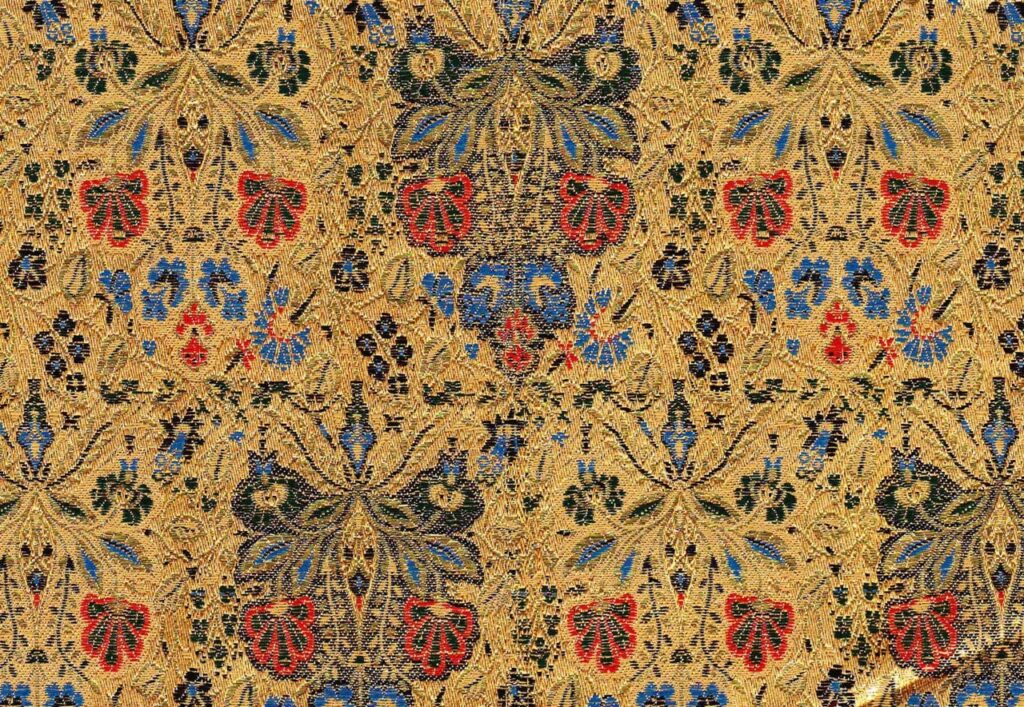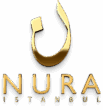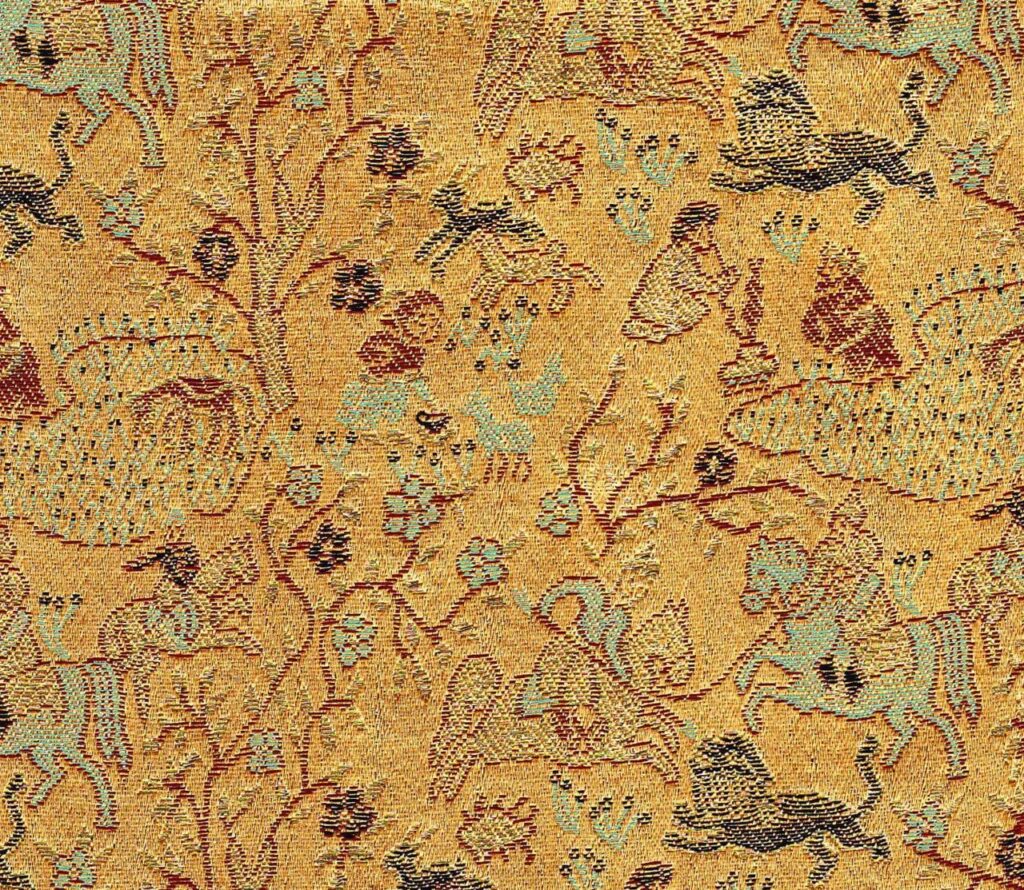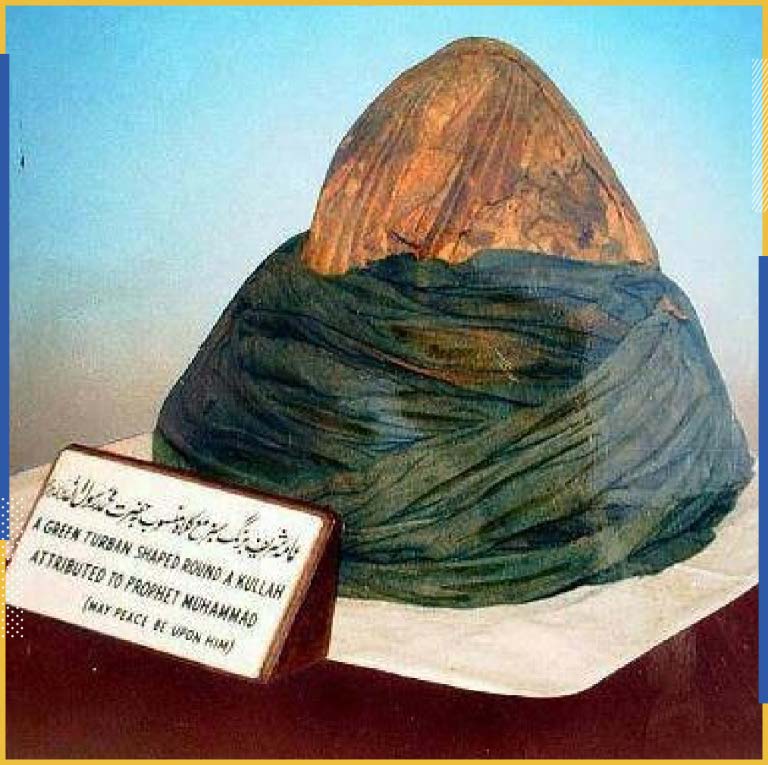Damask is a weaving technique that has been famous in Damascus for over two thousand years and became known globally as “Damask.” Damascene fabric is considered one of the most luxurious and expensive fabrics in the world. The Damascene weave was highly sought after and sold by merchants on the Silk Road. Its fame grew, and beautiful, luxurious products were crafted from it. Merchants in Damascus first brought the cloth to Europe in the 11th century, and soon European cities and countries began producing their own versions of patterns woven with the Damask technique: in France in the 13th century, the Belgian city of Courtrai in the 15th century, Ireland in the 17th century, and Haarlem in the Netherlands in the 18th century. Despite its difficulty to master and its limitation to expensive fabrics, the handcrafted Damask technique maintained its prestigious status.
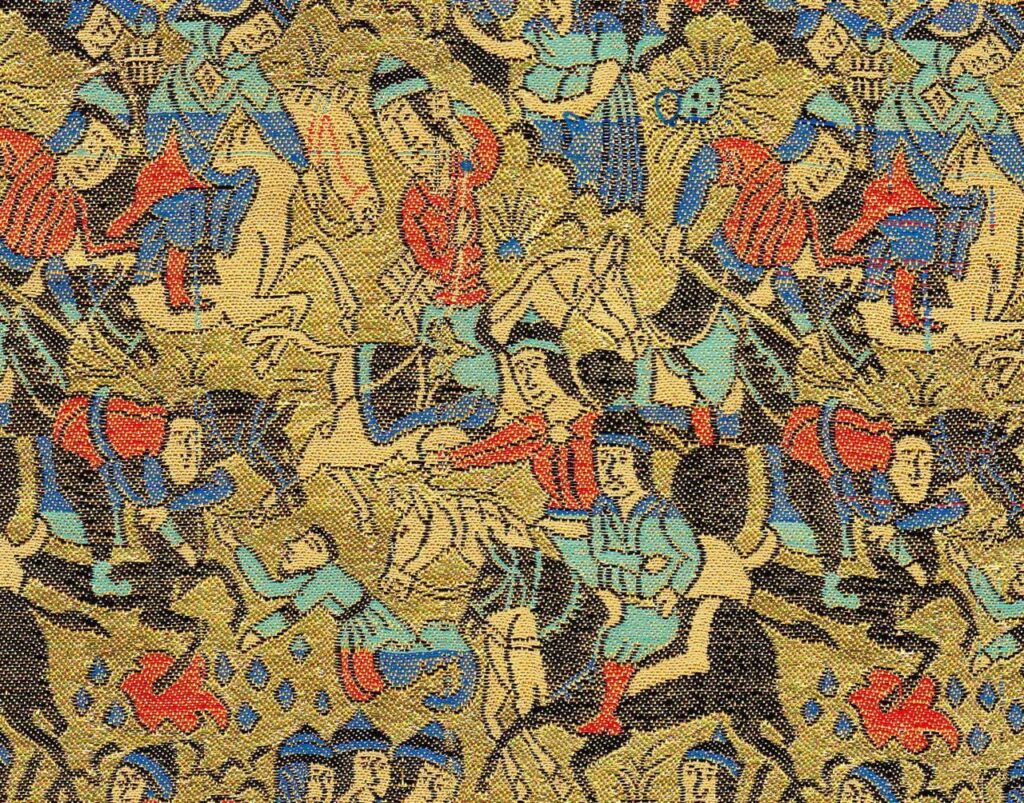
With the invention of the Jacquard loom during the Industrial Revolution in the 19th century, this machine developed the textile industry in general, including Damask. It became faster and cheaper than ever before and remains the basis of every modern digital loom. It can weave intricate and precise multi-colored patterns in a single piece. The patterns are part of the fabric itself, not printed or embroidered. It also allowed for the production of durable and thick fabrics with fine details.
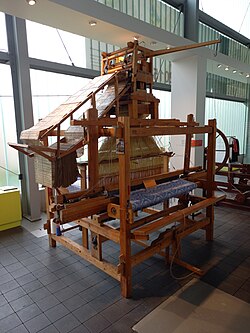
One type of Damask is Brocade, whose name comes from the Italian word “Brocatello,” meaning decorated silk cloth with gold or silver threads. This name transitioned into French as “Brocart.” This is a thick fabric with raised decorations. Brocade was woven with silk threads imported from China via the Silk Road. Later, Syrian artisans used locally produced silk, especially from the Dreikish region, which was famous for silkworm rearing.
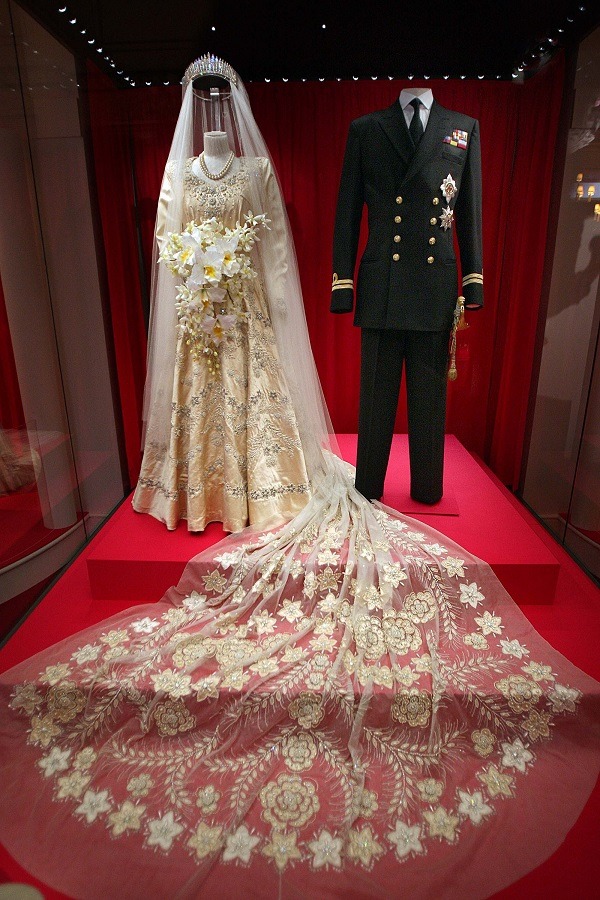
In our current era, Damask is not limited to silk threads, but natural fibers like cotton and synthetic fibers like polyester are also used, and each fabric has its own characteristics and price.
Types:
- Silk – The most luxurious and expensive. €50 – €150
- Cotton – Durable and less costly. €20 – €60
- Synthetic – The cheapest and strongest but with less natural luster. €10 – €30
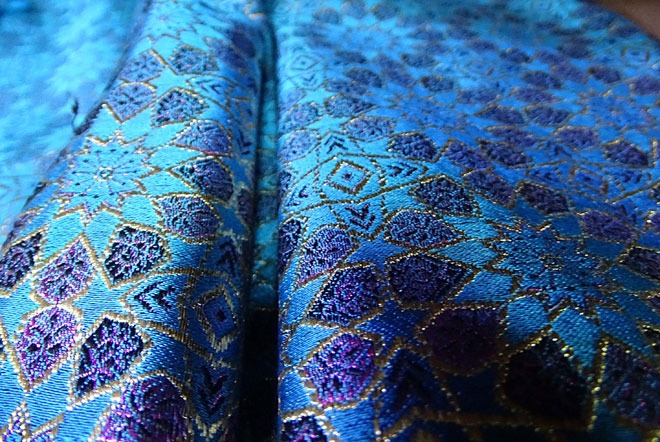
Designs That Tell Stories of Civilizations
Damask carried aesthetic and artistic touches that highlighted taste and elegance. The Damascene artisan excelled in showcasing wonderful manifestations of beauty, some inspired by daily Damascene life, such as the drawing of the almond and small roses in Damascene homes, as well as the famous butterfly drawing that contains seven colors, and they drew the lovebird, which brocade merchants later named the “Lover and Beloved” pattern. From the Arab and Islamic heritage, they drew motifs inspired by geometric shapes in the Umayyad Mosque in Damascus, the drawing of Noah’s Ark, the Battle of Hattin, and Sinbad the Sailor’s journey, in addition to Damascene Persian Art. From Europe, there were “Romeo and Juliet” drawings and motifs taken from the German Imperial Crown. From Persia, scenes of gazelle hunting and the amber flower, and from Kashmir, the Cashmere pattern. These designs highlighted the extent of the convergence of civilizations on the Damascene fabric, which told their stories to generations.
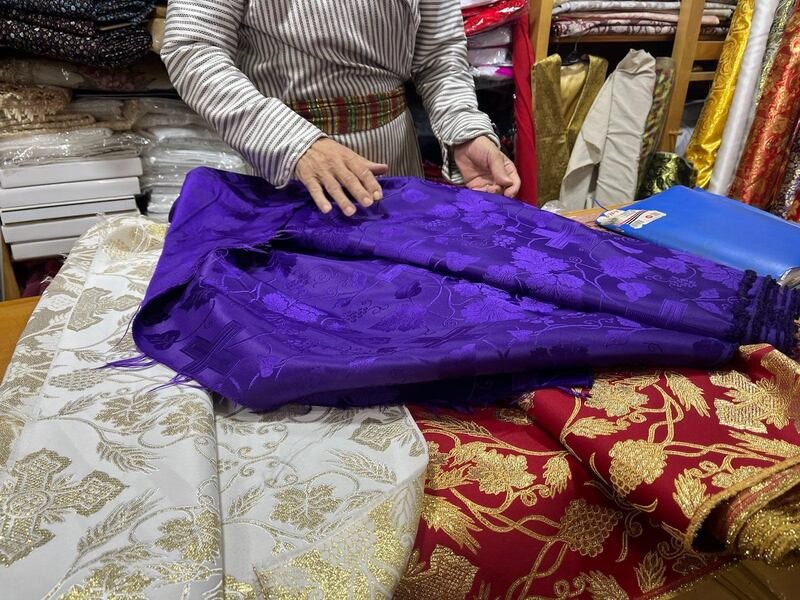
Some of the most famous people who owned Damascene Silk throughout history:
- Queen Marie Antoinette of France: Known for her passion for Damascene Brocade, she owned 72 different types in her wardrobes.
- Pope John Paul II, Pope of the Vatican: Used Damascene Brocade in his ecclesiastical vestments, with special patterns designed to suit the symbolism of the Vatican.
- Queen Elizabeth II, Queen of Britain: Was gifted Damascene Brocade fabric for her wedding.
- Queen Noor Al-Hussein, Queen of Jordan: Was among the Arab queens who admired Brocade and ensured it appeared in her looks.
- King Juan Carlos, King of Spain: Was one of the most prominent European figures who expressed admiration for Damascene Brocade during his official visits.
- Queen Sofia, Queen of Spain: Wore Damascene Brocade on several occasions and expressed her admiration for its craftsmanship and luxury.
- King Fahd bin Abdulaziz, King of Saudi Arabia: A huge mural of Brocade, measuring 112 square meters, was hung in his palace in Riyadh.
- Queen Hajah Haminah, Queen of Malaysia: Acquired Damascene Brocade and wore it at official events.
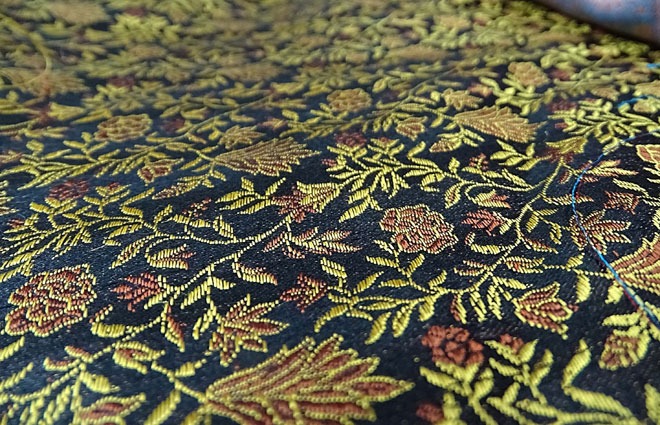
Pope Benedict, Pope of the Vatican: Continued the use of Damascene Brocade decorated with religious motifs for major Vatican ceremonies. A number of artifact pieces of this fabric are still displayed in international museums.
